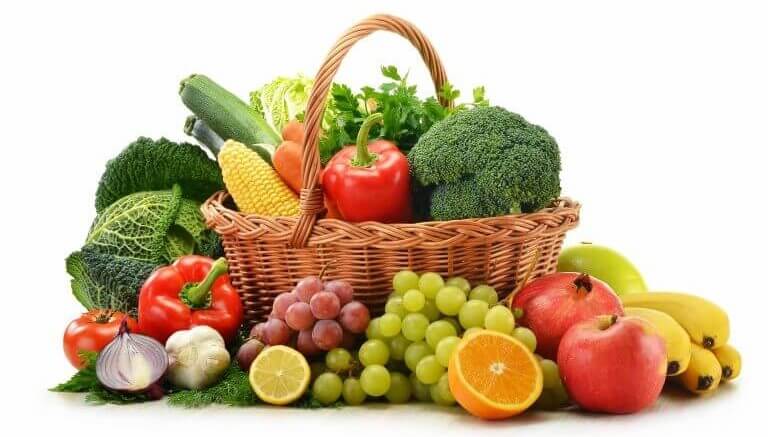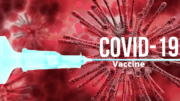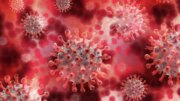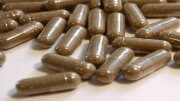Analysis by Dr. Joseph Mercola | FACT CHECKED ü
Story at-a-glance
- Recent research found elderly individuals who ate the most flavonoids had the slowest rate of cognitive decline
- Kaempferol and quercetin were both associated with slower global cognitive decline
- Quercetin is found in a wide variety of fruits and vegetables, including onions and shallots, apples, broccoli, asparagus, green peppers, tomatoes, red leaf lettuce, strawberries, raspberries, blueberries, cranberries, black currants and green tea
- Good sources of kaempferol include spinach, kale and other green leafy vegetables, chives, dill, tarragon, onions, wild leeks, asparagus and berries
- Kaempferol is also one of the most important constituents in ginkgo biloba, which has been used in traditional Chinese medicine for thousands of years. A 2008 study found kaempferol-rich ginkgo biloba extract significantly inhibited the proliferation of pancreatic cancer cells. Ginkgo biloba’s ability to improve memory and cognition has also been studied for decades
Recent research has again highlighted the importance of eating a wholesome whole foods diet. Fruits and vegetables are rich in flavonoids, bioactive compounds that have anti-inflammatory, antioxidant and cytoprotective properties,1 known to benefit both body and brain.
Flavonol-Rich Foods Slow Cognitive Decline
In this particular study,2 they analyzed the diets of 961 participants between the ages of 60 and 100, who were followed for an average of 6.9 years as part of the Rush Memory and Aging Project, to determine how diet affected cognitive ability in old age.
None had signs of dementia at the onset of the study. Diet was reported using a semi-quantitative food frequency questionnaire, and cognitive performance was assessed annually through 19 standardized tests. As reported by the authors:3
“Higher dietary intake of total flavonols and flavonol constituents were associated with a slower rate of decline in global cognition and multiple cognitive domains.
In continuous models adjusted for age, sex, education, APOE-ɛ4, late life cognitive activity, physical activity, and smoking, total flavonol intake was associated with slower decline in global cognition β estimate=0.004, episodic memory β=0.004, semantic memory β=0.003, perceptual speed β=0.003, and working memory β=0.003 …
Analyses of individual flavonol constituents demonstrated that intakes of kaempferol and quercetin were associated with slower global cognitive decline [β=0.01 and β=0.004], respectively …
Results suggest dietary intakes of total flavonols and several flavonol constituents may be associated with slower decline in global cognition and multiple cognitive abilities with older age.”
Participants with the highest daily flavonol intake got about 15 milligrams a day, equal to approximately 1 cup of dark leafy greens, whereas those with the lowest intake only got about 5 mg a day.
For reference, the average daily flavonol intake for American adults is estimated to be between 16 and 20 mg,4 so this study also shows that many elderly aren’t getting enough fruits and vegetables.
Focus on Whole Foods
A key detail to keep in mind here is that they were not looking at supplementation. Only food. Nutritional researchers who spoke with CNN5 about the findings stressed that foods contain many other bioactive compounds, and we cannot be absolutely certain that it was these specific compounds that warded off dementia.
It’s a worthwhile warning. Oftentimes, it’s the synergistic effect between compounds in whole foods that create the “magic.” So, the take-home message here is that fruits and veggies are good for you, especially your brain. So, if you want to preserve your cognition, focus on eating whole foods.
The Many Health Benefits of Quercetin
By now, many of you will be familiar with quercetin. The late Dr. Vladimir Zelenko popularized quercetin supplements for the early treatment of COVID-19 after access to hydroxychloroquine was restricted.
Both quercetin and hydroxychloroquine are zinc ionophores, meaning they shuttle zinc into the cell. Zinc, in turn, has potent antiviral activity. Early on, this was thought to be the sole reason why quercetin worked against COVID. Later on, researchers discovered a number of other mechanisms of action that also have beneficial impacts on the infection.
For general long-term health, however, you can get quercetin from a wide variety of fruits and vegetables, including onions and shallots, apples, broccoli, asparagus, green peppers, tomatoes, red leaf lettuce, strawberries, raspberries, blueberries, cranberries, black currants and green tea.6
The quercetin content in any given food is largely dependent on light exposure, so depending on the country you’re in, different foods will top the list of most quercetin-rich. Aside from slowing cognitive decline, quercetin has also been shown to be helpful in the prevention and/or treatment of:7
:7
|
High blood pressure8,9 |
|
Cardiovascular disease10 |
|
Obesity11 and metabolic syndrome12 (a cluster of conditions including high blood pressure, high blood sugar, high triglyceride levels and fat accumulation around the waist that raise your risk for Type 2 diabetes, heart disease and stroke) |
|
Certain kinds of cancer, in particular leukemia, and to a lesser degree breast cancer13 |
|
Nonalcoholic fatty liver disease (NAFLD)14 |
|
Gout15 |
|
Arthritis16 |
|
Mood disorders17 |
|
Aluminum-induced neurodegenerative changes, such as those seen in Alzheimer’s, Parkinson’s and amyotrophic lateral sclerosis (ALS)18 |
|
Longevity, thanks to its senolytic benefits (clearing out damaged and worn-out cells)19,20 |
Quercetin’s Mechanisms of Action
Among its mechanisms of action are:21
|
Antioxidant activity — Antioxidants help prevent oxidative damage from harmful reactive oxygen species (ROS). Quercetin acts as a free radical scavenger, and its activity can be further enhanced by vitamin C |
|
Anti-inflammatory activity and cardiovascular benefits |
|
Anti-allergy activity by inhibiting release of histamine and other allergic substances |
|
Immunomodulation — For example, it modulates NLRP3 inflammasome, an immune system component involved in the uncontrolled release of pro-inflammatory cytokines that occurs during a cytokine storm22 |
|
Antiviral activity — It’s been found to reduce replication of many viruses, including HIV, hepatitis B23 and C,24 Streptococcus pneumoniae,25 influenza,26 SARS-CoV-2,27 respiratory syncytial virus (RSV)28 and common cold viruses.29 It also boosts interferon response to viruses, including SARS-CoV-2, by inhibiting the expression of casein kinase II (CK2).30 CK2 is an enzyme that is fundamental to controlling homeostasis at the cellular level. There is evidence that it down-regulates the ability a cell has to generate Type 1 interferon when attacked by a virus. Quercetin is also a zinc ionophore, i.e., a compound that shuttles zinc into your cells,31 and zinc, in turn, has potent antiviral activity. By attenuating oxidative damage, it also lowers your risk of secondary bacterial infections,32 which is the primary cause of influenza-related deaths |
|
Anticancer activity — Quercetin inhibits cancer growth, increases apoptosis (programmed cell death) in cancer cells, and increases autophagy, your body’s natural clean-out process33 |
|
Anti-blood clotting activity; inhibits platelet aggregation34 |
Research has also highlighted quercetin’s epigenetic influence, and its ability to:35
- Interact with cell-signaling pathways
- Modulate gene expression
- Influence the activity of transcription factors
- Modulate microRNAs
MicroRNAs used to be considered “junk” DNA. But far from being useless, research has revealed so-called “junk” DNA is actually microRNA and plays a crucial role in regulating genes that make the proteins that build your body. The microRNA function as “on/off” switches for the genes. Depending on the microRNA input, a single gene can code for any of more than 200 proteins.
Health Benefits and Sources of Kaempferol
Like quercetin, kaempferol also has anticancer effects, selectively inhibiting the growth of cancer cells while protecting healthy cells. Good sources of kaempferol include spinach, kale and other green leafy vegetables, chives, dill, tarragon, onions, wild leeks, asparagus and berries.36
Kaempferol is also found in ginkgo biloba. In fact, kaempferol is considered to be one of its most important constituents. Ginkgo is a tree native to China that has been used in traditional Chinese medicine for thousands of years. In 2008, research37 was published showing kaempferol-rich ginkgo biloba extract significantly inhibited the proliferation of pancreatic cancer cells.
Ginkgo biloba’s ability to improve memory and cognition, and prevent or treat dementia has also been studied for decades. In one study, Ginkgo was shown to protect the brain against the neurotoxic effects of aluminum chloride,38 which has been linked to Alzheimer’s and other cognitive impairments.
According to Cleveland Clinic,39 an adult dose of 120 to 600 milligrams (mg) of ginkgo biloba per day seems to be effective for addressing memory problems. In general, Ginkgo is believed to positively affect your body by increasing blood supply, reducing blood viscosity, boosting neurotransmitters and reducing harmful free radicals.40
A Few Notes on B Vitamins
A word of caution related to ginkgo biloba: Its seeds contain ginkgotoxin (4′-O-methylpyridoxine), an “antivitamin” that may lead to neurological problems in certain people, particularly those who are deficient in certain B vitamins.41
B vitamins are also useful in helping to reduce brain shrinkage and prevent degenerative brain diseases. In particular, folic acid and vitamins B6 and B12 have been shown to play a powerful role in preventing Alzheimer’s. High levels of the amino acid homocysteine have been linked to brain shrinkage and an increased risk of Alzheimer’s. B vitamins are known to suppress homocysteine.
In a 2010 study,42 participants received relatively high doses of folic acid, B6 and B12. Two years later, those who had received the vitamin-B regimen suffered significantly less brain shrinkage compared to those who received a placebo. According to the authors:
“The accelerated rate of brain atrophy in elderly with mild cognitive impairment can be slowed by treatment with homocysteine-lowering B vitamins.”
Diet Is Paramount
In closing, I want to reiterate that getting fixated on supplements is far from ideal. You’ll get the biggest bang for your buck by focusing on eating a whole food diet with lots of fresh fruits and vegetables, ideally organically or biodynamically grown.
What’s good for your body is also good for your brain, and vice versa. Synergistic effects are also part of the equation, and those are virtually impossible to tease out. You can trust, however, that you’re getting those benefits if you’re eating a variety of real, unprocessed food.
If you want to preserve your cognition, focus on eating whole foods.





